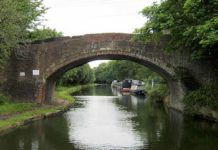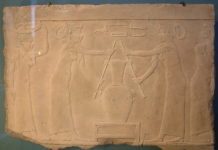
In the sentimental glow of hindsight, pirates have typified freedom, romance and adventure. Suffering their depredations was a totally different matter.
In the 7th and 8th centuries, for instance, the litany as recited in churches along the east coast of England included a prayer for protection from marauding Vikings. Yet the destruction, looting, rape and killing that descended on English coastal settlements at that time proved how often such prayers went unanswered.
The Huge Prizes of Piracy
The temptation to turn pirate was very great, whether it was along the English coast or the shores of China, North Africa, the Caribbean or anywhere else in the world where men, and some women, became sea borne criminals for gain.
After all, the prizes could be colossal, far greater than almost any other means of earning a living. In the 18th century, even a minor venture could yield as much as US$5,250 and a successful pirate could amass a phenomenal fortune during his disreputable career.
In 1671, Henry Morgan sacked the city of Panama so thoroughly that it had to be rebuilt and took away from that one raid two hundred mules laden with gold and silver.
Another lone exploit, the capture of a ship belonging to Akbar, the Great Moghul of northern India, in the Red Sea, brought John “Long Ben” Avery a cargo of one hundred thousand pieces of eight and the Moghul’s beautiful daughter.
The Risk of Being Caught was Minimal
The audacity of such pirates was partly due to the relatively small risk of capture and execution. Those who might successfully have challenged piracy failed to do so strongly enough.
Although Britain’s Royal Navy managed to hunt down and kill a certain number of pirates, including the terrifying “Blackbeard”, Edward Teach, in 1718, its policing of the seas was not sufficiently consistent. Defences designed to protect vulnerable areas from pirate attack were similarly faulty.
Early in the 18th century, the Bahamas, for instance, were a pirates’ paradise. The plunderers were completely free to loot merchant ships, terrorize the inhabitants and successfully defy many of the attempts the British Government made to dislodge them.
The pirates’ self-confidence was so great that in 1718, when a fleet of warships sailed in to make yet another attempt to clean up the islands, one of them, the impudent Charles Vane, sailed down the line of vessels saluting each one.
Woodes Rogers. Pirate Hunter
Nevertheless, that particular show of force by the British Government heralded the arrival in the Bahamas of the one governor who was to succeed where all others failed.
Woodes Rogers, a wealthy Bristol merchant who had volunteered for the job, showed the Bahamian pirates a brand of ruthlessness that matched their own. Rogers even daunted Charles Vane, who was never seen in the area again after the islands had been fortified with batteries of guns and thirteen pirates had been executed as an example.
Rogers owed much of his success to the fact that he himself had once been a privateer and so understood the buccaneering mentality.
Pirates and Privateers
Although the privateer differed from the pirate by possessing some official sanction for his activities, the line between the two was thin and frequently crossed. In the late 17th century, both Captain William Kidd and John Avery graduated from privateering to piracy, though which of the two identities was assumed by the English ”Sea Dogs” Francis Drake and John Hawkins in the 16th century has never been decided.
Woodes Rogers embarked on his own three-year privateering voyage in 1708, to recoup the losses he and his fellow merchants had suffered when pirates seized their vessels. There is no doubt, though, that Rogers more than made up for his misfortunes.
He looted the Spanish colony at Guayaquil in Ecuador stone a fortune in silver and valuables, and on his way home to England, captured a Spanish galleon with treasure on board worth US$ 1.5 million.
Whether privateer or pirate, the men on ships like that of Woodes Rogers obtained in their share of the booty far more money than they could ever have earned on a regular seaman’s pay. They also enjoyed better conditions and better food than could be had on merchant vessels or warships of the time, where cruelty was common, living quarters squalid and food virtually inedible.
The Reluctant Pirates
Yet with loot so lucrative and life so liberal, large numbers of pirates had to be forced into their profession. Many were former crews of captured ships, who were compelled to turn pirate or they were men laid off from ships with scant hope of another voyage in prospect.
The reluctance with which most were recruited provides some evidence that the apparent advantages of a pirate’s life might well have been a façade concealing justice too rough, companions too treacherous and dangers too deadly for any but the most savage, immoral or desperate of men.
Sources:
- Woodard, Colin: The Republic of Pirates: Being the True and Surprising Story of the Caribbean Pirates and the Man Who Brought Them Down (Mariner Books, 2008) ISBN-10: 1616883693/ISBN-13: 978-1616883690/ASIN: B001VEI00G
- Konstam, Angus: Piracy: The Complete History (General Military)(Osprey Publishing, 2008) ISBN-10: 1846032407/ASIN: B003IWYJXG







